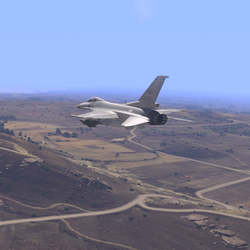Air
Overview

Air Crews are comprised of one or two pilots tasked with providing aerial support by rotary or fixed-wing aircraft. Patience, good aircraft knowledge and clear ground-to-air communications are essential to the efficient operation of aerial assets. Aircraft can fill one of two roles during the course of an operation:
- Logistics air crews are responsible for the insertion and extraction of ground forces, whether by direct landing, the use of fast-roping, or paradrops. They are also responsible for aerial resupply. An understanding of the aircraft's capabilities and safe reactions to hostile threats are key to success.
- Close Air Support (CAS) air crews will be tasked with the destruction of enemy ground forces with the instruction of a Forward Air Controller. A disciplined attitude and a good technical understanding of the aircraft's weapon systems are important when operating Close Air Support.
Pilot
The Pilot is directly responsible for the aircraft during any operation. They are the de facto commander of the aircraft and must ensure the safety of the craft and its crew at all times. A good Pilot must remain calm, stay focused and be patient in order to carry out their objectives without incident.
Depending on the type of aircraft in use, Pilots may also be charged with operation of some or all of the aircraft’s weapon systems.
Copilot
The Copilot is responsible for assisting the Pilot as required during flight operations. This may include providing additional information or operating the Longwave Radio. The Copilot should be in regular communication with the pilot and be ready to take over control of the aircraft at a moment’s notice.
Depending on the type of aircraft in use, the Copilot may also be responsible for some or all of an aircraft’s weapon systems.
